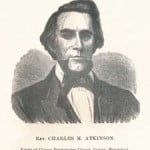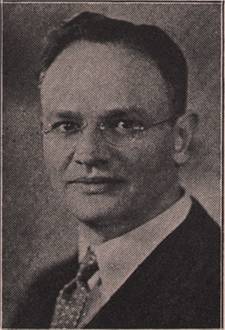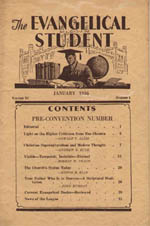JOB PRUDDEN
WAS the great-grandson of the Rev. Peter Prudden, whose ministry—in Hertfordshire, on the borders of Wales—was attended with uncommon success. Many good people followed him, when he sailed with the first settlers for New Haven, that they might enjoy his pious and fervent ministrations. He was of the strictest order of Independents; and when the town of Milford, Connecticut, was settled, the church was “gathered to him” and the six principal planters, as the seven pillars which “Wisdom hewed out, when she builded her house.” (Prov. ix. 1.) “All those who had desired to be received as free planters had settled in the plantation, with a purpose, resolution, and desire that they might be admitted into church fellowship according to Christ.” “Church members only should be free burgesses.”
When Mr. Prudden was installed, April 18, 1640, three of the pillars, by the appointment of the church, laid on hands, even as the prophets and teachers at Antioch laid hands on Barnabas and Saul, “separating them to the work whereunto the Holy Ghost called them.” (Acts xiii. 2.) He died in 1656, aged fifty-six. Mather, in his “Magnalia,” describes him as “a zealous preacher, a man of excellent spirits, signally successful in reconciling and preserving peace.” He left a large landed estate at Edgton, Yorkshire, (England,) still possessed by his descendants. His second son, John, graduated at Harvard in 1668, and was the minister of Jamaica, Long Island, and of Newark, New Jersey, where he died, at an advanced age, in 1725.
In 1737, difficulties arose in the congregation in relation to the settlement of Mr. Whittlesey as pastor,—a respectable minority regarding his doctrine as Arminian and his preaching as un-edifying. They urged their objections so strongly, and with such apparent concern and conscientiousness, that the majority of the Council declined to ordain. The majority of the people, headed by Deputy-Governor Law, insisted on their rights; and it was finally agreed to ordain him, and that the minority should hear him for six months, and, if not satisfied, should settle a colleague according to their liking. They heard him two years, but were more dissatisfied, and, in 1740, applied to the church, and then to the town, for relief according to the agreement. But, finding them intractable, they asked for advice of the Association; but they obtained neither advice nor countenance. They then—according to the statute for the relief of conscientious scruplers—declared “their Sober Dissent from the Standing Order” established in the colony, professing themselves to be Presbyterians according to the church of Scotland; and agreed, November 30, 1741, to set up a separate society, if thirty heads of families would unite for that purpose. On the following Sabbath, they met for worship at the house of George Clark, Jr.; and, on the last Tuesday in January, they qualified themselves before the county court, according to the Toleration Act. In this act thirty-nine persons took part. The Rev. Benajah Case, of Simsbury, was fined and imprisoned for having preached for them on the 17th of the month. Whittlesey refused his pulpit, on Sabbaths when he did not use it, to the ministers who came to preach for them.
One of them preached from the door-stone to an assembly of a thousand.
Whitefield had preached at Milford,[1] Connecticut, with an unusual success, in October, 1740, and Gilbert Tennent was there in the next spring.
The people made preparations to build a meeting-house in May, 1742; but the town refused to allow them to erect on the Common. The county court granted them liberty to build, November 9; and, in that month, they raised it on land given by Bartholomew Sears. The Rev. John Eels, of Canaan, preached the first sermon in it, and the constable was ordered to apprehend him; a like order was issued against the Rev. Elisha Kent, of Newtown; but they both escaped his search.
Mr. Jacob Johnson,[2] a native of Groton, Connecticut, who graduated at Yale in 1740, preached to them, having taken the necessary oaths. Having made him a call, they applied to some members of New Brunswick Presbytery to receive them under their care, and take Mr. Johnson on trials with a view to ordination.
They constituted themselves a church, and elected ruling elders. “Accordingly, said members did send to him pieces of trial: a sermon on Rom. viii. 14, and a Latin exegesis,—‘An regimen ecclesiæ presbyteriale sit Scripturæ et rationi congruum?’ ” The presbytery met, April 6, 1743, to hear the exercises, and Johnson, with the commissioners, Benjamin Fenn and George Clerk, were present; and, having taken the congregation under their care and proceeded some length in the examination, they paused, and advised that a further attempt be made towards a reconciliation with the First Church. If this attempt should fail, then they shall be allowed to have supplies; and they sent Treat, of Abingdon, thither, to obtain further information for them. He spent two Sabbaths in June with them, and was called July 20; but the presbytery, out of regard to the remonstrances of his people, refused to put the call in his hands. They then requested the presbytery to send them Samuel Finley. He preached two Sabbaths, August 25 and September 1. For this offense he was prosecuted, tried, and condemned. Governor Law ordered him to be transported as a vagrant—disturbing the peace of the community—by the constable, from town to town, out of the colony. This treatment was considered, by some of the ablest civilians in Connecticut and the city of New York, to be so contrary to the spirit and letter of the British Constitution, that, had complaint been made to the king in council, it would have vacated the colonial charter.
Pomeroy, of Hebron, preached to them occasionally, and was arrested, and carried to Hartford, to answer to the General Assembly for his conduct.
In May, 1744, New Brunswick Presbytery laid before the conjunct presbytery an important affair from the Presbyterian Society of Milford. It was probably an application for supplies; for the presbytery, in July, sent Sackett, of Bedford, Youngs, of Southold, and Lamb, of Baskingridge, thither, and advised the people to try to get Mr. Graham’s son for their minister.
Job Prudden was a native of Milford. He graduated at Yale in 1743, and was licensed by New York Presbytery. He was re-ceived under the care of New Brunswick Presbytery, October 10, 1746, and was called to Milford, May 19, 1747: two commissioners attended, and he was ordained and installed at that time. Up to May, 1750, they were taxed for the support of Whittlesey. They were then released by the General Assembly; but not until ten years after, did the Assembly invest them with the full privileges of an ecclesiastical society.
When Norwalk[3] called William Tennent, Jr., in 1765, to be colleague with Moses Dickinson, he expressed to the presbytery his desire to remain in connection with them. They accordingly appointed his father, Hait, Prudden, and Kirkpatrick, to install him. The town, under a misapprehension[4] of the design of the presbytery, resolved to withdraw the call unless Tennent united with the Association and conformed to the Standing Order. In this state of things Tennent succumbed.
Prudden[5] was a laborious, prudent, and faithful pastor, sound in doctrine, and experiemental in his preaching. His people were entirely and universally satisfied with his talents, meekness, pru-dence, and piety. They increased in numbers under his ministry, and lived down the rancorous opposition of misguided men.
He died June 24, 1774, aged fifty-nine, having taken the small-pox while visiting a sick person. He gave one hundred pounds to “his Society’s” fund, and bequeathed to it all his real and personal estate.
[1] History of Milford.
[2] Johnson graduated at Yale in 1740, and settled at Groton, Connecticut. He was employed as a missionary among the Indians at Canojoharie; and, for his zeal in ferreting out the evidence of the Connecticut title to the Susquehanna purchase, he was styled by Conrad Weiser, the Pennsylvania agent, “that wicked priest.” He was called to Westmoreland, now Wilkesbarre, and was the minister there for a number of years. Was this “New England over the mountains,” to which Abingdon Presbytery sent supplies?
[3] MS. Records of New Brunswick Presbytery.
[4] Dr. Hall’s History of Norwalk.
[5] Trumbull.



